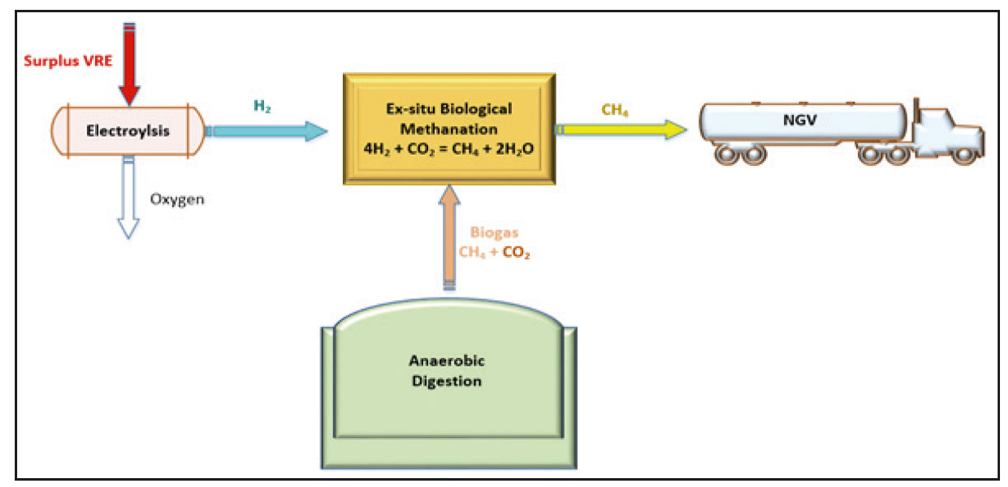IEA Bioenergy: Integration of biogas systems into the energy system
Did you know that biogas systems can be a way of integration between electricity and gas networks to save electricity? This is possible due to the production of methane surplus from hydrogen after electrolysis and CO2 from biogas and storage of this methane in gas networks.

In general, biogas can displace natural gas in the existing infrastructure, in particular in the food industry, as well as in the areas of high-temperature production of materials (cement industry and glass production). Biogas plants offer many solutions for future agricultural infrastructure, waste processing from circular economy approaches to the production of transport biofuels.
Biogas was traditionally seen as a means of treatment of a range of wet organic wastes (from municipal, industrial and agricultural sources), more recently as a source of renewable energy (as exemplified by digestion of Maize in the German biogas industry).
How is biogas used now?
- thermal energy production,
- electricity production,
- enrichment to biomethane for transportation by gas infrastructure,
- usage as a transport fuel.
But the climate emergency requires vast changes in how we produce and use energy. The electricity sector includes for ever-increasing portions of intermittent renewable electricity such as from wind and photovoltaic (PV), neither of which are dispatchable. Innovation and ingenuity will be required by electrical utilities in matching supply to demand and in monitoring and control of grid frequency and voltage. Producers and consumers of energy will face significant changes in the energy market, particularly associated with times of production of energy and times of use of energy. The integration of energy vectors will be essential in facilitating PV during daylight hours, wind power on windy days, and renewable sources of dispatchable energy such as from bioenergy. The need to cope with the changes in demand for energy over the day, the week, or the season results in technical requirements for the energy supply system such as start-up time, capacity increase and decrease rate, and time to shutdown.
Flexibility in this report represents the ability of a biogas plant operator to control operation in a manner to best match the output of the biogas plant with the demand of the users of the provided energy be they in the electricity, heat, or transport sectors.
Features of biogas systems
- dispatchable,
- can help to balance the fluctuations resulting from intermittent renewable electricity.
- biogas plants can be a node of integration between electrical and natural gas grids in providing a sink for electricity (through the power to gas systems) that would otherwise be curtailed or constrained and an enhanced producer of green gas for injection to the natural gas grid for use as a source of electricity, heat or advanced transport fuel.
That’s why:
- Biogas can play an essential role (together with PV and wind) as part of a virtual power plant in local distribution energy grids.
- Biogas systems can operate as a biological battery in coupling the electricity and gas grids.
- Biogas systems can play key role in future energy market by using surplus electricity to produce hydrogen to react with biogenic CO2 in biogas producing biomethane and increasing the output of biomethane.
Source: Report of the International Energy Agency (IEA Bioenergy): https://bit.ly/3nt9Ji9.
More information at the link: www.ieabioenergy.com.


